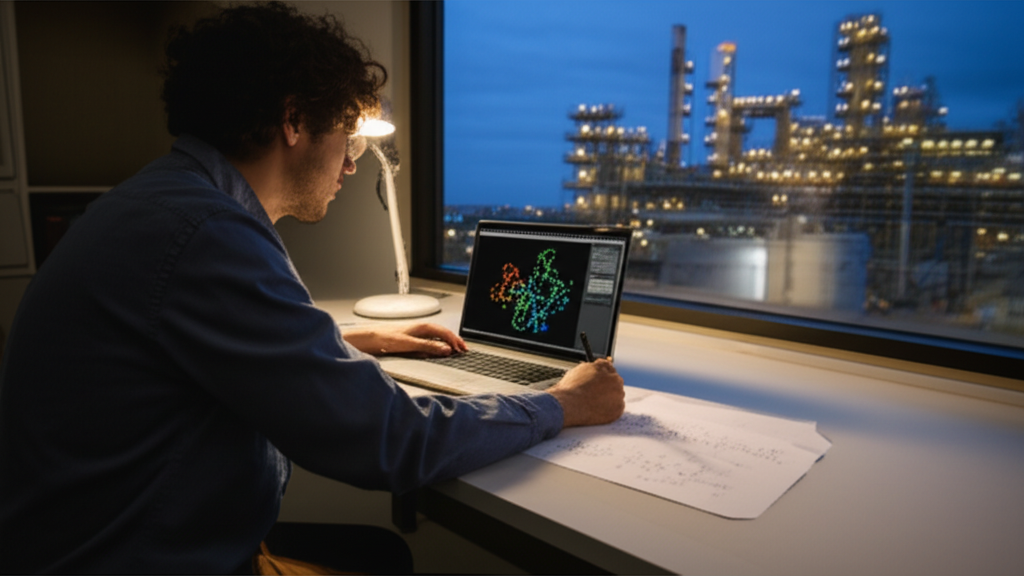The pharmaceutical industry gains a promising new route to isoindoline (2,3-dihydro-1H-isoindole), a pivotal building block for bioactive molecules. Researchers have developed a patented two-step reduction process overcoming longstanding economic and environmental hurdles in manufacturing this critical heterocyclic compound.
Traditionally synthesized via single-step borane-tetrahydrofuran reduction yielding 50-80% or expensive cyclization routes, isoindoline production faced significant barriers. Borane reagents’ toxicity, high cost, and specialized equipment demands rendered large-scale processes economically challenging. Alternative methods using corrosive dibromoxylenes or pricey amino alcohols offered unsatisfactory solutions with complex purification.
The innovative approach employs phthalimide as a starting material. Stage one applies mild reduction using sodium borohydride with cobalt chloride catalysis in methanol at 0-20°C, selectively generating the key intermediate 3H-isoindol-1-one. After acidification and dichloromethane extraction, Stage two deploys lithium aluminum hydride in tetrahydrofuran with nickel chloride/polyethylene glycol catalysts at 0-10°C for exhaustive reduction to crude isoindoline.
Crucially, the sequential reduction strategy enables precise reaction control. Thin-layer chromatography (TLC) monitors each stage completion before workup. Subsequent purification features a signature cryocrystallization: dissolving crude isoindoline in ethanol and chilling to -10°C yields high-purity crystals that, upon thawing under nitrogen, deliver a colorless liquid product exceeding commercial purity standards.
Four transformative advantages distinguish this technology: Firstly, employing affordable, commodity catalysts (CoCl₂, NiCl₂) and safer reductants slashes reagent costs by ~70% versus toxic borane systems. Secondly, the methodology generates minimal waste with optimized atom economy. Thirdly, operational simplicity using standard reactors lowers capital investment. Finally, consistent yields exceed 80% while eliminating hazardous byproducts—addressing industrial viability from economic, safety, and environmental perspectives.
This breakthrough comes amidst rising demand for isoindoline-derived anticancer agents, CNS drugs, and agrochemicals. The streamlined workflow not only enhances supply chain resilience but provides medicinal chemists purer building blocks for structure-activity studies. Pilot implementations demonstrate scalable output exceeding 10kg batches, positioning the technology as a green manufacturing benchmark for nitrogen-containing heterocycles.

By transforming a historically problematic synthesis into an economically sustainable process, this advance paves the way for accessible production of isoindoline-based therapeutics. Manufacturers have begun licensing this environmentally conscious technology, signaling its potential to reshape pharmaceutical intermediate supply chains globally.
Manufacturing Facilities






Professional Export Experience
to Global Customers

1. 20 years of R&D, manufacturing and sales experience, serving customers in 60 countries and regions around the world;
2. Own R&D laboratory, pilot platform and large-scale production workshop, which can meet the audit requirements of global customers;
3. We can satisfy customers' perfect transition from small scale lab requirements (gram level) to commercialization requirements (hundred tons level).
A: We don't have Minimum Order Quantity, exact quantity should be provided before quotation for us to calculate the exact cost.
A: We don't provide free samples due to lots of request and expensive international courier's cost, we can deduct the sample charge after commercial order placed.
A: Our payment terms: Small or sample order: T/T IN ADVANCE. Commercial order: First order should be by T/T IN ADVANCE or L/C at sight, and following orders T/T 30~90days is acceptable subject to approval of credit application.